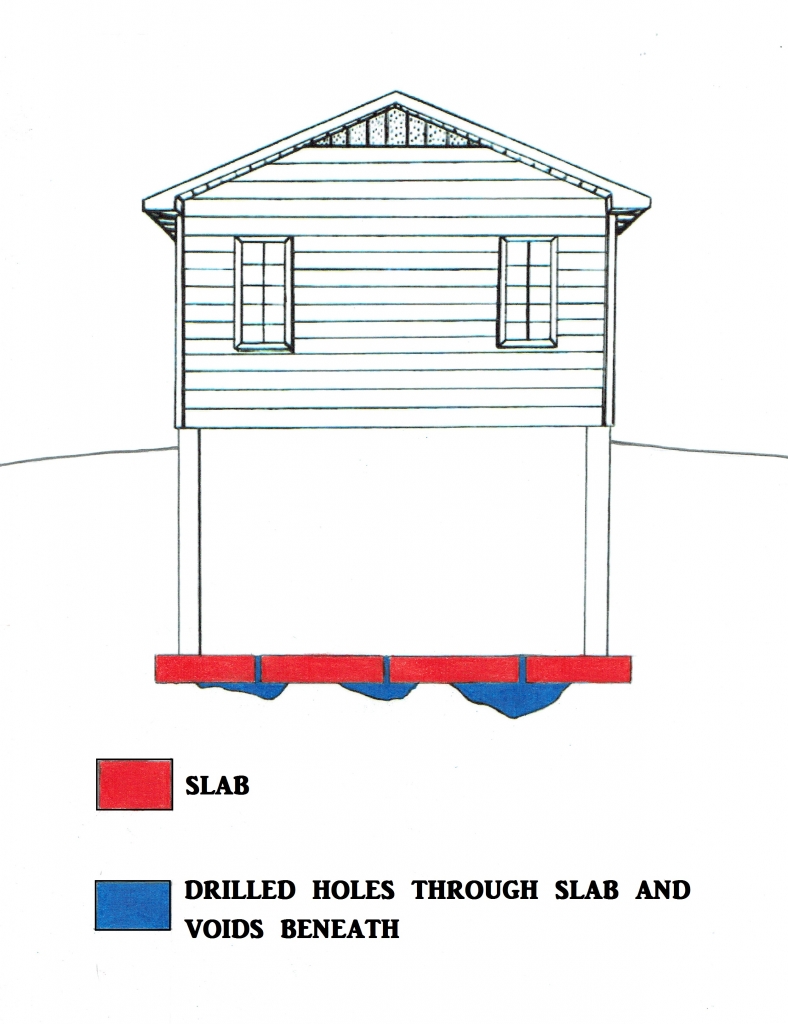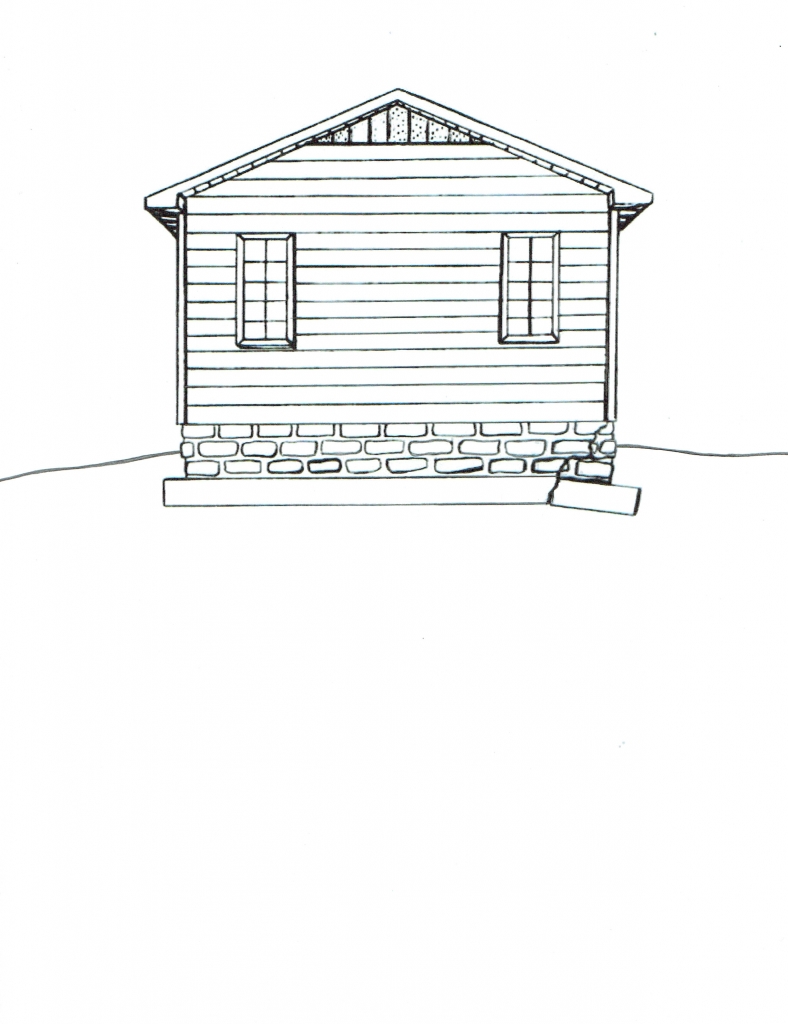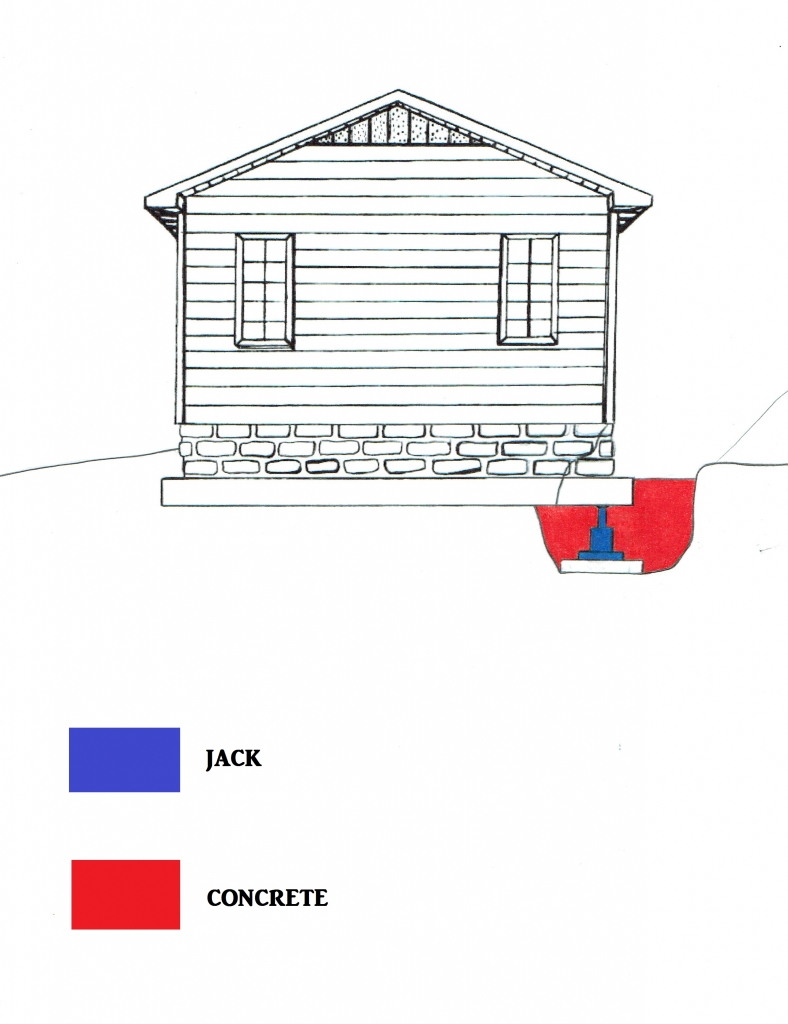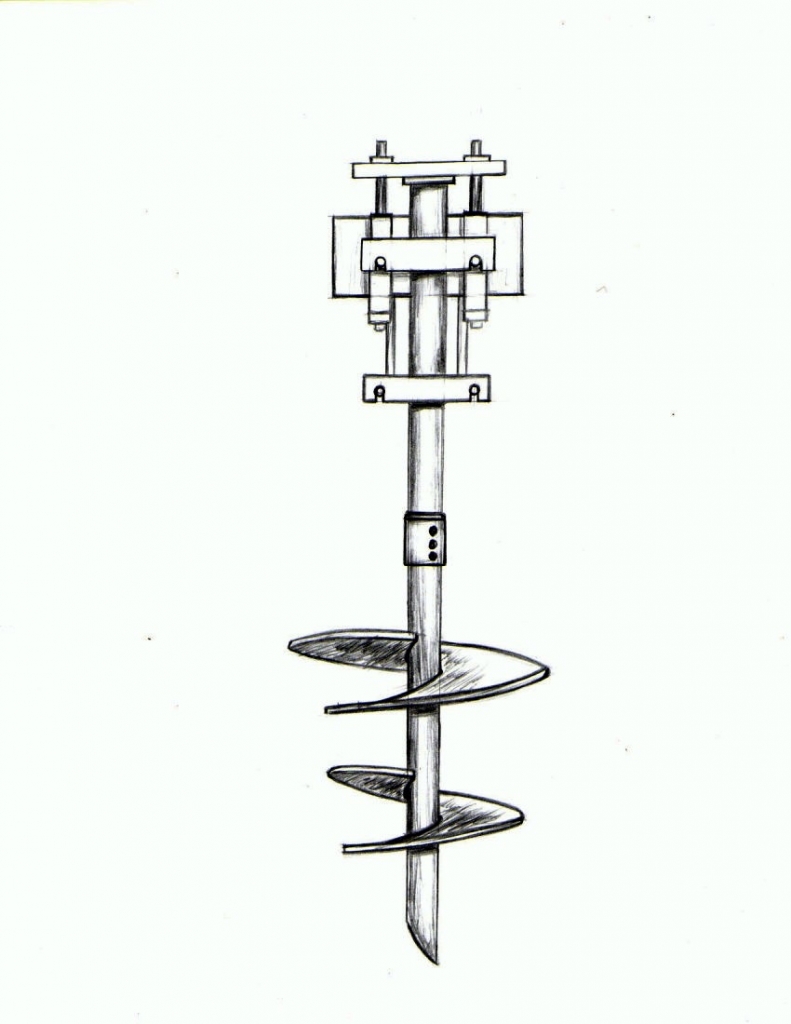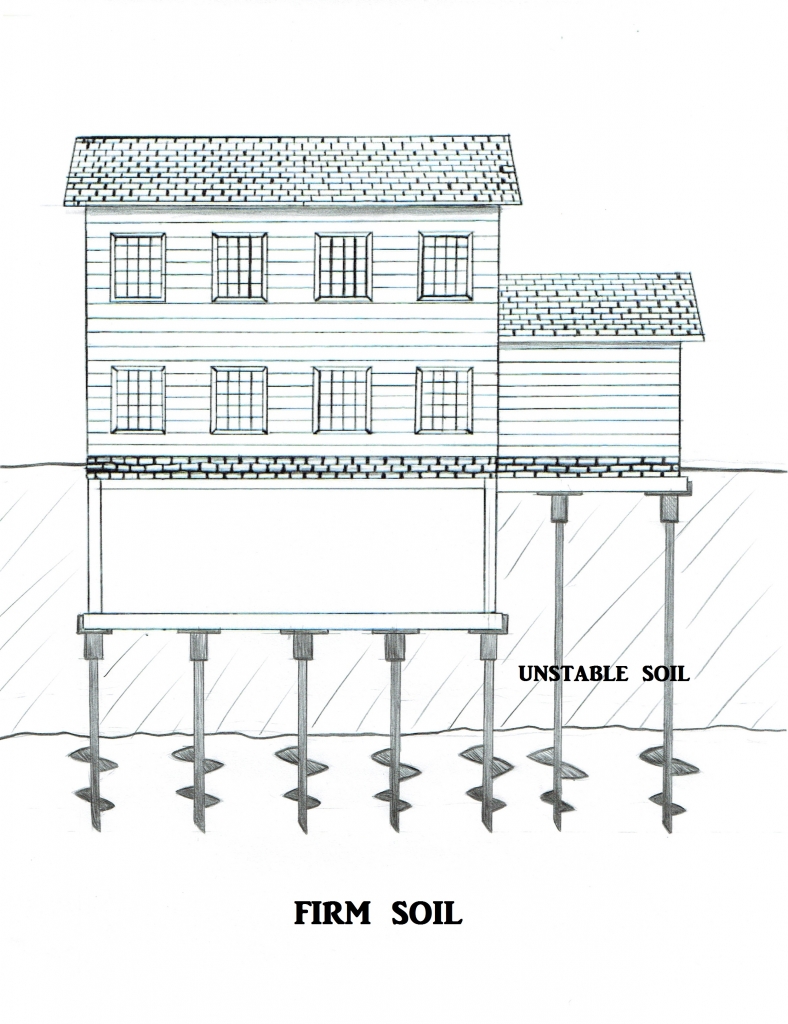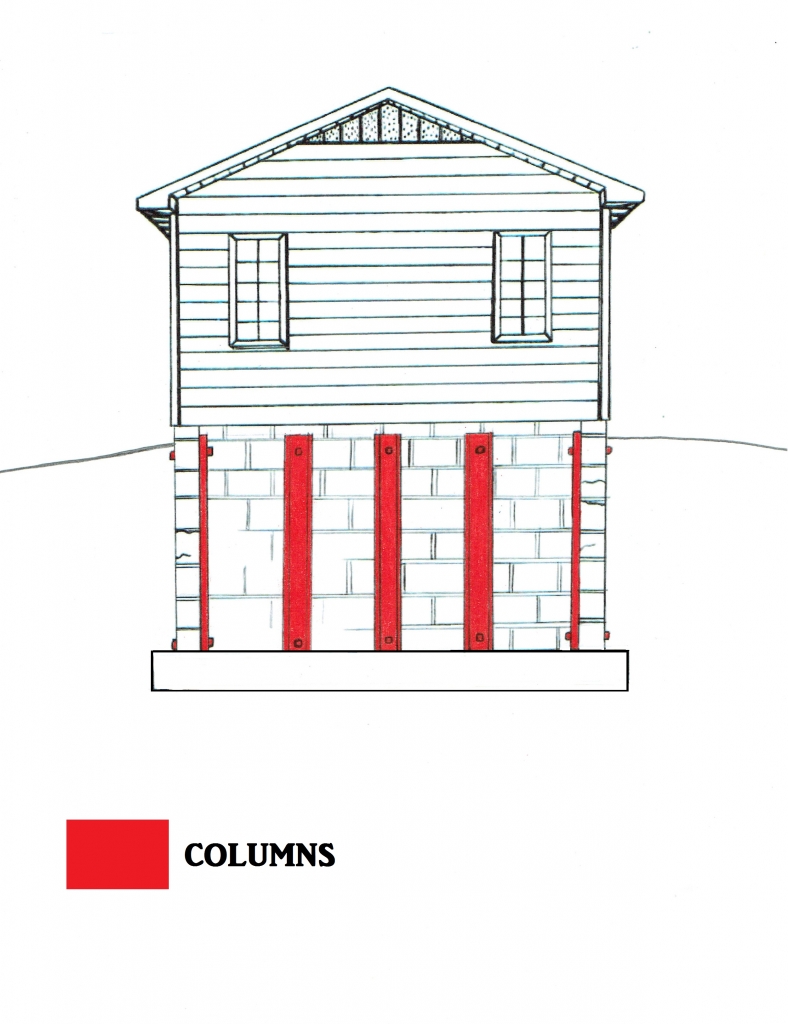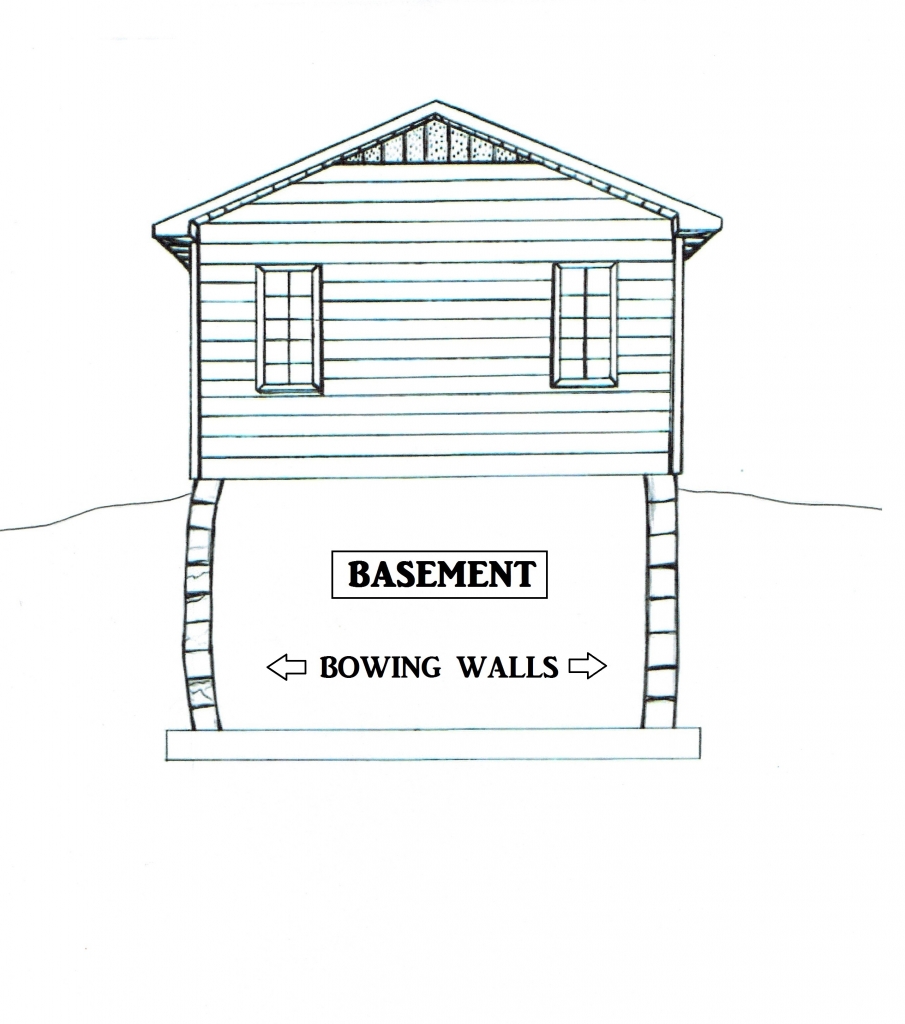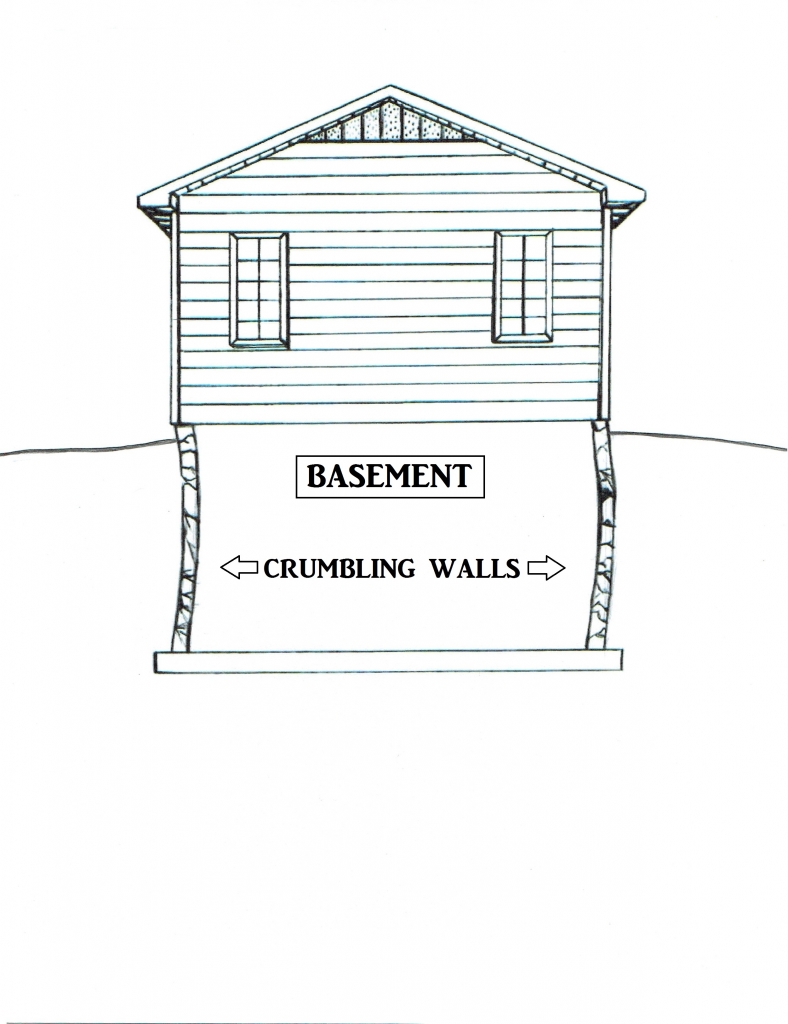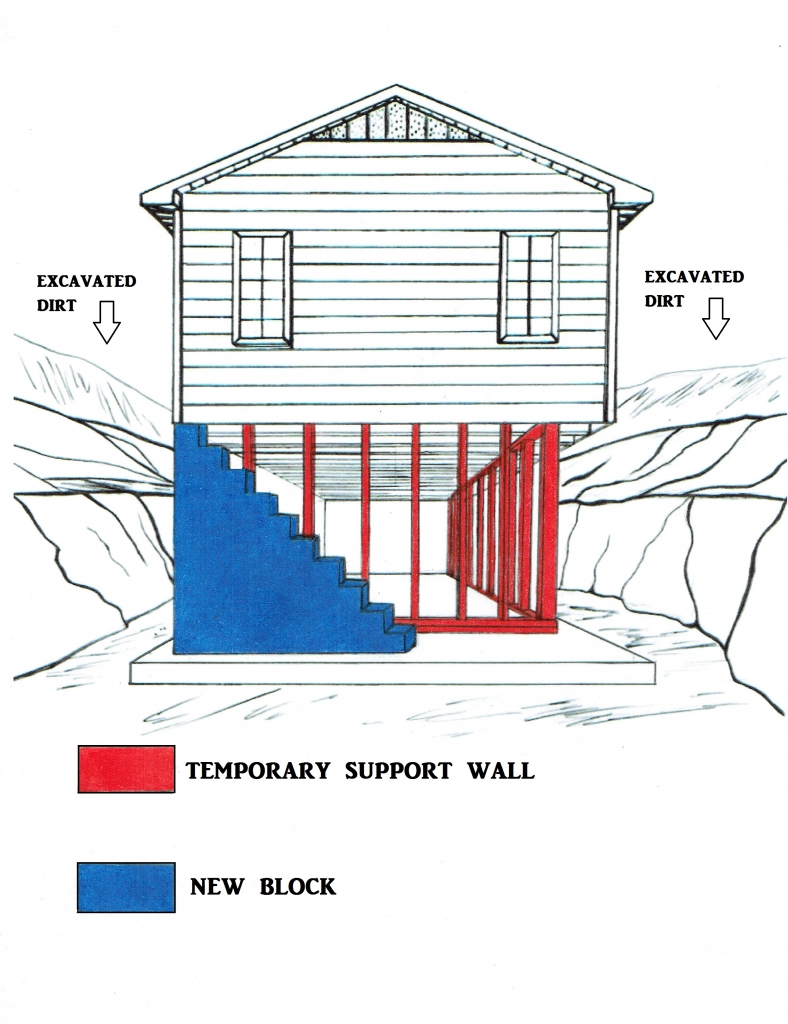Repair Methods
Repair methods will be strategized based on the type of problems and issues that are seen.
Shrinkage/Expansion Cracks
The most common type of cracks in foundations are caused by shrinking or expanding concrete. Concrete is a mixture of cement, water, and aggregate and is subject to the effects of temperature. Consequently, fluctuations in temperature can cause concrete to dry and shrink. Typical repairs involve sealing the crack to prevent water leaks. This can include use of epoxies, sealants such as polyurethane foam sealant, or chipping out the crack and filling it in with a masonry patching compound.
Vertical Movement in Foundations
A home built on expansive clay, or improperly constructed foundation footings, lack of steel reinforcement in the poured wall, settling soil due to poorly compacted fill soil, or dry soil can contribute to the foundation settling or sinking. The damage can take form of large, significant cracks that run vertically along a wall.
The most commonly known types of repair methods include: grout pumping, slab jacking, and piering.
Grout Pumping
Also known as mudjacking or pressure-grouting, grout pumping utilizes grout to stabilize the soil underneath footings or concrete slabs by elevating the concrete slab to proper height. The material used is a modified concrete mixture, and is typically substantial in weight. This method is suitable if the stable soils are not too deep and for a short term repair. For areas in which the bedrock or stable soils are deeper, slabjacking would be a more appropriate repair method.
Mud jacking: Solution to settling and/or sinking slab caused by voids beneath the slab.
Slabjacking
Slabjacking is a method that involves pumping grout underneath a slab to create a lifting force in an effort to restore the foundation to its original elevation. The process involves digging out beneath the footer, inserting jacks to elevate the foundation to the proper height, then pumping grout or concrete which solidifies into a concrete mass that acts as additional bearing for the unstable concrete slab. Slabjacking is similar to mudjacking, but differs in that hydraulic jacks are utilized to lift the slab first, and a different, more permanent material is injected underneath. While the solution used for mudjacking is a significantly heavy mixture of modified concrete, slabjacking uses a more standard concrete mix.
Sometimes a lime-soil-cement grout mixture is used, with the idea that the lime in the mixture will help to stabilize the sub soil by neutralizing the alkaline soil, as well as restoring the concrete slab to its proper grade.
Piering Method
A method that typically addresses larger-scale foundation problems. Steel pipes are driven into the ground next to the foundation and pushed deep into the soil until they reach the bedrock. Piering is usually used when a section of foundation wall has begun settling or moving out of place due to improper soil settling or footer undermining. This method offers a more precise method of leveling concrete slabs compared to grout pumping. There are two main types of piering systems, push piers and helical piers.
Push Piers
Steel piers, aka push piers or steel pipe pilings, are used to fix foundation settlement or sinking issues. The pipe pilings that are used are steel rods that are galvanized (covered in a zinc coating) or epoxy-coated, in order to deter corrosion and extend life span of the rods. The push piers are inserted in sections, and a hydraulic ram is used to push them deep into the ground.
Piers, or steel pipe pilings, are installed to the footing system of the house and inserted deep into the ground to elevate and stabilize the foundation. Piering is tied to the footing system with steel, and it functions to support the original foundation.
Installation of the push pier system can be broken into four main steps:
- Ground excavation around the foundation to make space for the new pier to be installed
- Install foundation brackets for piering system
- Install of the push piers
- Use hydraulic jacking to level the sinking concrete slab, transferring some weight of the structure onto the piering system
Helical Pier
Helical piers, also known as ground anchors and screw anchors, are piers with a helical screw anchor at the end of the pipe, instead of straight steel piping. These helical piers resemble large screws and are ideal for applications with more shallow bedrock.
Installation of a helical pier system is similar to the installation of push piers. However, in addition to the use of a hydraulic jack, a hydraulic gear motor is used to screw the helical piers into the ground first. When the helical piers reach appropriate torque and soil depth, then a hydraulic pump is used to elevate the concrete slab to proper height.
Bulging Walls
Known as the Same-for-same method, replacing a section of the compromised foundation wall with a new wall is a common method for repairing bulging walls. Same-for-same is somewhat of a misnomer, as the new wall usually requires added reinforcement, such as use of larger SMU’s, rebar, or filling with grout to prevent a repeat of the initial failure.
Soil Anchor
Steel Support Columns
Foundation replacement: Solution to bowing or crumbling foundation walls.
Foundation replacement: Solution to bowing or crumbling foundation walls.
1. A temporary support wall is built to hold the house during excavation.
2. The house is excavated.
3. The old foundation wall is taken out and replaced block by block.










